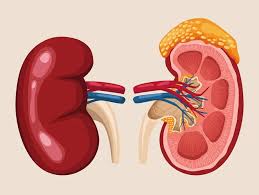Glossophobia is the intense fear of public speaking that causes significant anxiety for those affected, often arising from fears of judgment or embarrassment. This fear can lead to physical symptoms like sweating and trembling, making communication difficult. Overcoming glossophobia typically requires practice, supportive environments, and possibly professional help. If the fear severely impacts daily life,... Continue Reading →
Understanding Catarrh: Causes and Treatments
Catarrh is a build-up of mucus (phlegm) in your airways. It typically manifests in the back of the nose, the throat, or the sinuses, resulting in various symptoms that can be uncomfortable. This condition is frequently linked to other illnesses, such as colds, sinus infections, or allergies, which can exacerbate mucus production. In most cases,... Continue Reading →
Effective Ways to Prevent Back Pain: Tips and Advice
Back pain is a common ailment that can range from a dull ache to sharp, sudden pain, often leading to discomfort that hinders daily activities. It can affect any part of the back, from the neck to the lower back, and is often caused by strains, sprains, or structural problems in the spine or surrounding... Continue Reading →
Understanding Bronchiectasis: Symptoms and Treatment Options
Bronchiectasis is a chronic lung condition that profoundly affects the breathing tubes, or airways, within your lungs. If you have bronchiectasis, the walls of the airways become wider and damaged due to persistent inflammation or recurrent infections, which may arise from various factors, including underlying health conditions or environmental irritants. This damage results in an... Continue Reading →
Altitude Sickness: Causes, Symptoms, and Treatment Options
Altitude sickness sometimes called “mountain sickness,” is a group of symptoms that can strike if you walk or climb to a higher elevation, or altitude, too quickly. This condition typically occurs when the body is unable to acclimatize fast enough to the decreased oxygen levels found at higher altitudes, leading to a variety of physical... Continue Reading →
Understanding Alkaptonuria: Causes and Effects
Alkaptonuria is a rare inherited metabolic disorder that affects the body's ability to break down certain compounds, specifically homogentisic acid. This condition arises due to a deficiency in the enzyme known as homogentisic dioxygenase (HGD). In a healthy individual, HGD plays a crucial role in the catabolism of tyrosine, an amino acid, converting homogentisic acid... Continue Reading →
Understanding Pheochromocytoma: Causes and Symptoms
Pheochromocytoma is a rare tumor that develops in the adrenal glands, typically originating from chromaffin cells, which are responsible for producing catecholamines such as adrenaline and noradrenaline. These hormones play a crucial role in the body's fight-or-flight response, regulating blood pressure and heart rate. When a pheochromocytoma occurs, it leads to excessive secretion of these... Continue Reading →
Understanding Ichthyosis: Symptoms and Treatments
Ichthyosis is a rare genetic skin disorder. It is characterized by the abnormal formation of skin. This leads to dry, scaly patches that can be extensive. These patches may cover large areas of the body. This condition occurs when the skin can't effectively shed dead skin cells. This leads to a build-up of these cells.... Continue Reading →
Understanding Catarrh: Causes and Symptoms Explained
Catarrh, also known as postnasal drip, is a buildup of mucus in the back of the nose, throat, or sinuses, often causing a feeling of a "drip" at the back of the throat and a frequent need to clear it. This condition can be triggered by various factors, including allergies, colds, infections, and irritants in... Continue Reading →
Binge Eating Disorder: Signs, Symptoms, and Treatment Options
Binge Eating Disorder (BED) is a serious psychological condition characterized by recurrent episodes of eating large quantities of food, often very quickly and to the point of discomfort. Individuals with BED typically feel a lack of control during these binge episodes, which may be triggered by emotional distress, such as stress, anxiety, or depression. Unlike... Continue Reading →









